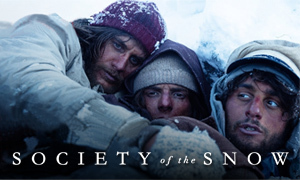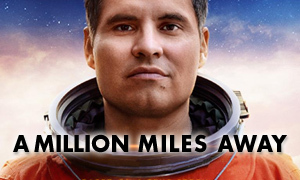The Lost City of Z: History vs. Hollywood
| REEL FACE: | REAL FACE: |
Charlie Hunnam
Born: April 10, 1980 Birthplace: Newcastle upon Tyne, Tyne and Wear, England, UK | Percy Fawcett
Born: August 18, 1867 Birthplace: Torquay, Devon, UK Disappeared: May 29, 1925, Mato Grosso, Brazil |
Sienna Miller
Born: December 28, 1981 Birthplace: New York City, New York, USA | Nina Fawcett
Born: 1871 Birthplace: Kalutara, Kolamba, Ceylon Death: 1954, Brighton, Sussex, England, UK |
Tom Holland
Born: June 1, 1996 Birthplace: Kingston upon Thames, England, UK | Jack Fawcett
Born: May 19, 1903 Birthplace: Colombo, Ceylon Disappeared: May 29, 1925, Mato Grosso, Brazil |
Robert Pattinson
Born: May 13, 1986 Birthplace: Barnes, London, England, UK | Henry Costin
Birthplace: UK |
Angus Macfadyen
Born: September 21, 1963 Birthplace: Glasgow, Scotland, UK | James Murray
Born: July 21, 1865 Birthplace: Glasgow, Scotland, UK Death: 1914, Arctic Ocean (likely froze to death or starvation) |
Elena Solovey
Born: February 24, 1947 Birthplace: Neustrelitz, East Germany | Helena Blavatsky (aka Madame Blavatsky)
Born: August 12, 1831 Birthplace: Yekaterinoslav, Russian Empire Death: May 8, 1891, London, England, UK (influenza) |
Edward Ashley
Birthplace: UK | Henry Manley (renamed Arthur Manley in the movie)
Born: abt 1885 Birthplace: UK |
How old was the real Percy Fawcett when he set out on his final expedition?
When the real Percy Fawcett set out on his final expedition in 1925, he was 57 years old. Though Charlie Hunnam's character has a grown son in the movie, the film's Fawcett appears to be a little younger, despite the makeup used to age Hunnam's face. As seen in the image below, the physical differences between Fawcett and his onscreen counterpart are apparent as well, with the real Fawcett possessing thinner, less muscular features. In researching The Lost City of Z true story, we learned that actor Benedict Cumberbatch, who more closely resembles Fawcett, was originally supposed to star in the film but dropped out due to scheduling issues.
How did Percy Fawcett meet his wife Nina?
In fact-checking The Lost City of Z movie, we learned that Percy Fawcett first encountered Nina Agnes Paterson while he was serving as a captain in the Royal Artillery, the artillery branch of the British Army. The pair met when he was stationed in the British Colony of Ceylon (now known as Sri Lanka) where Nina was born. -Telegraph.co.uk
In what year did Percy Fawcett marry Nina Paterson?
On January 31, 1901, Percy Fawcett married Nina Agnes Paterson after having previously called off their engagement for several years (apparently Fawcett's mother didn't like Nina and told Fawcett a lie that she wasn't a virgin so he would call things off). In the following years after they married, Nina gave birth to their two children. Their son Jack was born in 1903 and his brother Brian in 1906, the year Percy first began his expeditions into the Amazon. It was Jack who would accompany his father years later on their ill-fated 1925 mission to find the lost city Percy had named "Z".
Did the real Percy Fawcett go on just three expeditions?
No. The Lost City of Z true story reveals that in an effort to condense Fawcett's life into 2 hours and 21 minutes, his eight expeditions became three in the movie, each with their own sense of importance. -CNN.com
How big is the Amazon Jungle?
The wilderness of the Amazon is approximately the size of the contiguous United States. It is often so dense and impenetrable, Percy Fawcett and his team would usually only advance half a mile per day. -David Grann, Boston MOS
Had Percy Fawcett really been a member of the British Secret Service?
Yes, but he was more like Indiana Jones than James Bond, and comparing him to the former is even certainly a stretch. However, it has been said that his macho adventures were at least part of the inspiration for the Harrison Ford character. In the early 1900s, Fawcett was recruited to work for the British Secret Service as a spy in North Africa. It was common for the British Secret Service to recruit members of the Royal Geographic Society, since their roles as map makers/explorers often provided the perfect cover. He served for the war office on Spike Island, County Cork, Ireland from 1903 to 1906, and it was around that time that Fawcett became friends with Sir Arthur Conan Doyle, the famed author of Sherlock Holmes. The author would later use some of Fawcett's Amazonian field reports as research to inspire his novel The Lost World, which focuses on an expedition to a plateau in the Amazon basin where prehistoric animals, including dinosaurs, still exist.
What made explorer Percy Fawcett believe that an ancient city existed deep in the jungle?
Like his father, Percy was part of the Royal Geographical Society (RGS), having joined to study surveying and cartography (mapmaking). At age 39, his position with the RGS led him to Brazil to map the jungle region at the border of Bolivia and Brazil. Bolivia had just sold its rubber-rich province in that area to Brazil, and the RGS had been hired as an independent third party, free of local political sway. Fawcett would go on six more expeditions between 1906 and 1924, some with similar purposes as his first mission, including mapping the source of rivers, etc. -CNN
Starting in 1906, he had also begun to believe in the existence of an ancient city he referred to as "Z", which was reminiscent of El Dorado, the elusive jungle city of gold. By 1914, he had established detailed ideas about the lost city of Z and its possible whereabouts in the Mato Grosso ("thick bushes") region of Brazil. He in part based its existence on signs he noticed in topography and centuries-old pottery shards he had discovered in earthen mounds in the flood plain. He also thought he saw straight lines that appeared to be roads. During his time away serving in World War I, he began to view Z as more of an undiscovered utopia that stood in contrast to the war. -Author David Grann Presentation at Boston MOS
Is The Lost City of Z based on a book?
Yes. It is based on David Grann's bestselling 2009 book The Lost City of Z: A Tale of Deadly Obsession in the Amazon. Grann traveled to the Amazon jungle and retraced Fawcett's steps, interviewing tribes and tribal elders who had known about Fawcett through their tribe's oral histories. One woman even recalled meeting Fawcett as a child. Author David Grann believed that he learned what happened to Percy Fawcett, and he shares his conclusion in the book.
Did Fawcett's ancient city of Z threaten to shake up the understanding of the world?
Yes, and it was partly for that reason that many of his peers mocked and ridiculed him. The discovery of an ancient city in South America could alter the West's perception of the Old World and shake up Europe's civilizing mission; thus proving that a flourishing empire can exist without Western intervention or colonization.
Experts had also believed that Indians could not survive in large populations in the Amazon. They concluded that due to floods and pounding rainfall, the soil would be leached of its nutrients, leaving it unsuitable for crops. It was for this reason and others that archaeologists like Betty Meggers considered the region a "counterfeit paradise," a notion that has since been largely overturned. In fact, Fawcett himself was astonished by how much food that groups he encountered had and how well they had adapted to conditions in the jungle. -David Grann, Boston MOS
Did Percy Fawcett find a document that provided evidence for the existence of an ancient city in Brazil?
Yes. The document is known as Manuscript 512 and is believed to have been written by Portuguese fortune hunter João da Silva Guimarães during or after 1753. The document is housed at the National Library of Rio de Janeiro. In it, da Silva Guimarães wrote that he discovered an ancient city in 1753. The ruins contained a statue, arches, and a temple with hieroglyphics. The site was described in extensive detail but no exact location was given. Fawcett considered it a secondary goal after finding Z.
While back in England, did Percy Fawcett really loudly defend the rights of Brazilian natives?
In the movie, Percy (Charlie Hunnam) proclaims to his fellow Englishmen that certain native Amazon tribes could be equal to the white man. This doesn't go over well with the crowd he's speaking to. The movie's attempt at positioning Fawcett as a champion for equal rights seems to be a bit of an exaggeration. While he was friendly and respectful to natives he encountered, the 1953 book created from his papers and journal, titled Exploration Fawcett, finds him being courteous but to some degree looking down on South Americans. -Spectator.co.uk
Did the real Percy Fawcett seek advice from a psychic?
Yes. The Lost City of Z true story confirms that Fawcett had become a devoted follower of the charlatan psychic Madame Blavatsky (renamed Madame Kumel in the movie). -Spectator.co.uk
Did Fawcett write coded letters back home to his wife?
Yes. Fawcett's time in the British Secret Service led him to become very secretive. In an effort to not give away his location or the possible whereabouts of Z to rival explorers, he encrypted the letters he sent back home to his wife Nina. She would then use a cipher to decode them. -David Grann, Boston MOS
Had Percy Fawcett's father really besmirched the family name?
Yes. Fact-checking The Lost City of Z movie confirmed that Percy's father, Edward Fawcett, was an India-born aristocrat who squandered two family fortunes as a result of his gambling and drinking. In the movie, this leads to Sir George Goldie (Ian McDiarmid) telling Percy, "You could reclaim your family name." -Telegraph.co.uk
Did Percy Fawcett's celebrity really grow with each expedition he went on in search of Z?
Yes. Like in The Lost City of Z movie, all eyes were on explorer Percy Fawcett, whose expeditions had earned him quite the reputation. When he set off in Corumba by the Bolivian border in February 1925 on what would be his final expedition in search of an ancient city he dubbed "Z", millions of readers around the world waited for updates. The Los Angeles Times described his journey as "the most hazardous and certainly the most spectacular adventure of the kind ever undertaken." Local runners took letters back from the route, but the letters stopped after Fawcett left Dead Horse Camp on May 29, 1925. Fawcett, his 22-year-old son Jack, and Jack's friend Raleigh Rimell (pictured below, not included in the movie) were never heard from again. -CNN.com
How many people went on Percy Fawcett's final expedition?
Since mutiny was a huge problem for expeditions into the Amazon Jungle, Fawcett wanted people he could trust. His core group was made up of himself, his son Jack, and Jack's friend Raleigh Rimell. Jack and Raleigh both hoped to return home and become actors, a dream that the doomed expedition would keep from ever happening. Two guides also accompanied the group but turned back before they reached the denser jungle and hostile territory. -David Grann, Boston MOS
Were the bugs in the Amazon Jungle really as bad as what's seen in the movie?
Yes. In many ways they were worse. In The Lost City of Z book on which the movie is based, author David Grann describes the debilitating nature of the bugs, which drove some of the explorers mad. They were ceaselessly assaulted by insects, including bloodsucking ticks, flesh-eating chiggers, cyanide-squirting millipedes, clothes-eating sauba ants, and parasitic worms that caused blindness, to name a few. The worst, however, were the mosquitoes. Like in the movie, they turned the explorer's faces and hands into a mass of itching blood-blisters. To make matters worse, they also transmitted malaria and yellow fever, which many of the explorers contracted and died from. Mosquitoes have been said to be the chief reason that much of the Amazon is still largely uncharted territory. -David Grann, Boston MOS
When did Percy Fawcett's wife Nina last hear from him before he disappeared?
Nina Fawcett received a letter from her husband dated May 29, 1925. It included his last written words to her, "You have no fear of any failure," he assured his wife. The failure he was referring to was of course a failure to locate "Z", the ancient city that he believed existed deep in the Amazon jungle. In January 1927, more than a year and a half after Fawcett's last communication, the Royal Geographical Society were left with little choice but to accept the men as lost. -CNN.com
What happened to explorer Percy Fawcett?
In 2005, author David Grann travelled to Brazil and attempted to retrace Percy Fawcett's steps. In his book, he suggests that Fawcett and his two companions reached Dead Horse Camp (the location that found him shooting his horse and turning back on his previous expedition). A tribe of natives known as the Kalapalo, whose village is in the Dead Horse Camp location, told Grann a tale of a white explorer, a story which had been passed down through the tribe's oral history. Grann believed that man to have been Percy Fawcett. An elderly woman in the tribe remembered seeing Fawcett (a white explorer) and his companions when she was just a girl. The Kalapalo had warned the explorer and his group (thought to include Percy's son Jack Fawcett and Jack's friend Raleigh Rimell, who both appeared lame) not to go eastward into hostile territory, which was controlled by a warrior tribe they referred to as the "fierce Indians." The warning was ignored and the three men never returned, leading the Kalapalo to believe they had been killed by the neighboring hostile tribe.
How many people have died in search of Percy Fawcett?
It is estimated that roughly 100 people have died as part of 13 expeditions that set out in search of answers with regard to the fate of Percy Fawcett. Early expeditions hoped to find him alive, while later ones searched for remains and answers to what had become of him, his son Jack, and Raleigh Rimell. Peter Fleming, the brother of James Bond author Ian Fleming, went on one of the failed expeditions but survived to tell of the adventure. -Telegraph.co.uk
Have any of Percy Fawcett's theories about ancient civilizations in Brazil been proven true?
Yes. Even though his theories were initially scoffed at, a large portion of them have since been proven true. This includes the recent discovery of a monumental ancient civilization known as Kuhikugu close to the area where Fawcett and his team were looking. Is it possible that Fawcett stumbled upon the Kuhikugu ruins before his death? One can certainly speculate as the movie does, but David Grann, author of The Lost City of Z, tends to believe what the Kalapalo tribe told him, that Fawcett, his son Jack, and his son's friend Raleigh Rimell were killed by a nearby hostile tribe. For five evenings, the Kalapalo had observed the trio's campfire before it vanished on the sixth night, convincing them that Fawcett and his two companions had been killed by the "fierce Indians."
If ancient Amazon civilizations existed, then what caused them to collapse?
Archaeologists believe that the Amazon may have sustained millions of people. The reason for the collapse of these ancient civilizations can be summed up in one word, disease. Spanish conquistadors arrived in the Amazon in the early 16th century and brought with them diseases to which the natives had no immunity. -David Grann, Boston MOS
The Lost City of Z Movie Trailer & Related Videos
Broaden your knowledge of The Lost City of Z true story by watching the videos below, including a presentation by author David Grann on Percy Fawcett and his search for the ancient city he referred to as "Z".
Link-to-Learn More:
- Read David Grann's New Yorker Article that Led to His Book and the Movie
- Official Lost City of Z Movie Website







